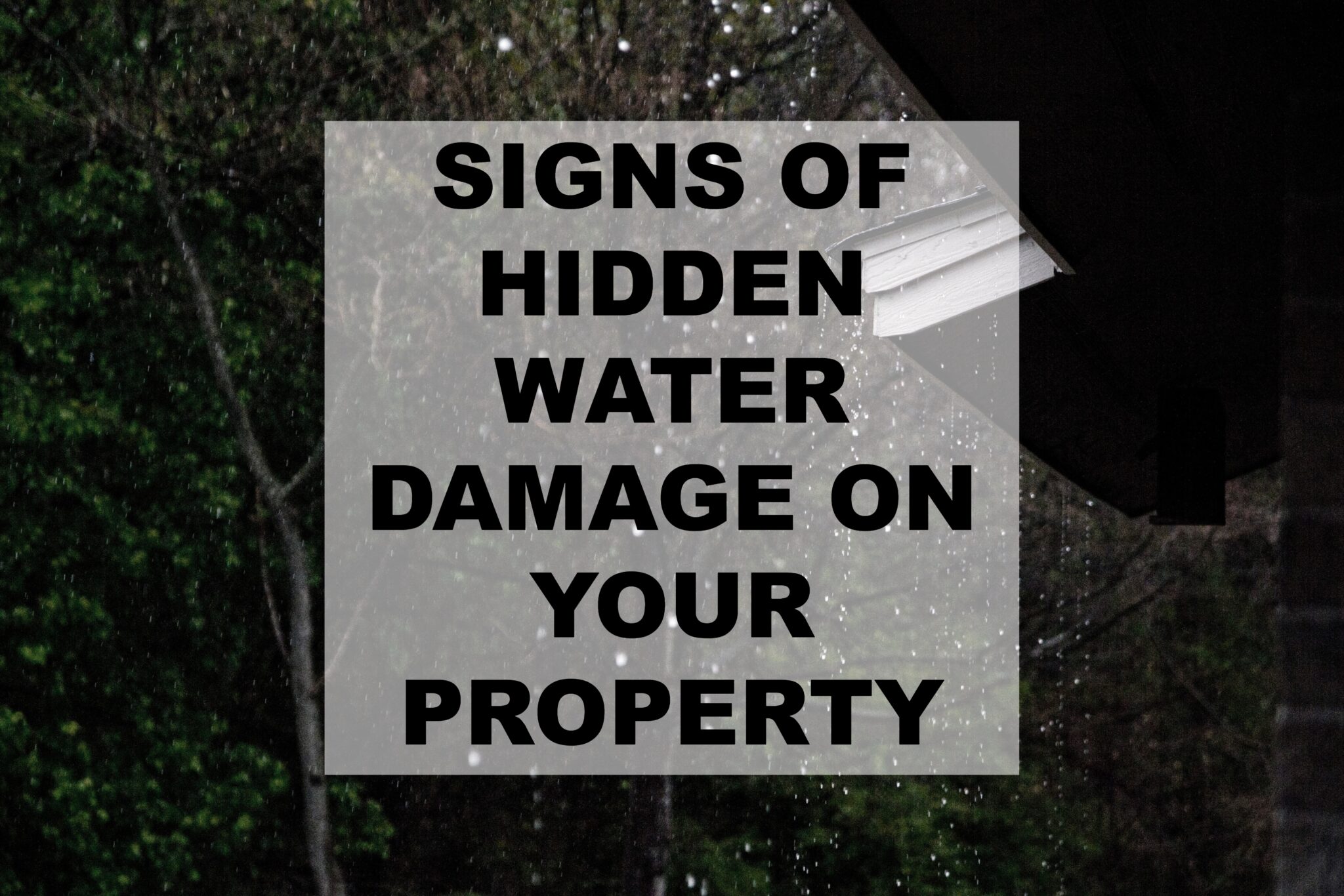
The problem with hidden water damage is twofold: visually, it can go undetected for a long time and, in doing so; it can seriously damage your home. Long-term water damage can cause the wood to rot around window sills, casements, door frames, and inside walls, it can pose a hidden danger to your health in the growth of toxic mold, and it can even weaken the foundation or cause structural deterioration. Water damage clean up can be costly to homeowners, too.
Chances are, any water damage restoration as a result of hidden water damage undertaken by a homeowner will be out-of-pocket. Even though water damage is one of the most frequent sources of home insurance claims, if the hidden damage is ‘gradual’ then it is generally not covered by homeowner policies (word of advice: check your homeowner policy today).
The key to avoiding such catastrophe to your home, as well as your savings, is to be wary for troubling signs of hidden water damage on your property—especially this time of year! Autumn in Maine and New Hampshire bring harsh winds and heavy rainstorms. With winter comes months of freezing rain, snow, and ice buildup. All the while your house is subjected to months of wet weather and moisture.
Water Damage: Where and When You Least Expect It
Even the most solidly built house can occasionally have water damage. A roof flashing may slightly buckle in a windstorm or partially dislodged due to ice, and water can enter along the side of a chimney. How well is your basement sealed? If your house happens to be below street level then your foundation can take a wet beating with each storm. Around window sills, water seepage inside your walls is not uncommon after wind-driven rainstorms. By the time mold finally comes to the surface, the wall could be on the verge of collapse. Even a hairpin crack in a water pipe, out of sight beneath floorboards or interior walls, will expand over time and cause water damage to your home.
Every house and building is an intricate structure. Inside the walls, above the ceiling, and beneath the floorboards are all the inner workings of a house. We do not see the pipes, wiring, conduits, and ventilation system that make a home or building function. Because water damage can occur in any nook or cranny or within any wall, regular inspection of your house should be as routine as a spring cleaning.
Checking for Signs of Hidden Water Damage
Some of the areas to check for potential hidden water damage around the house are your floors, ceilings or walls. Look for discoloration on sidewalls, around window casements and doorframes.
- Water spots are obvious signs of hidden water damage. However, if the paint is flaking, or drywall is cracking, even small sections, it could be a sign of a water leak within.
- If tile or floorboards are slightly bulging or raised it could be a sign of water buildup. An unexplained stain on a carpet (excluding your beloved Fido) is another sign you may have some type of hidden water damage.
- Checking the plumbing for leaks and signs of corrosion is another preventive measure homeowners can take to ensure against hidden water damage. If there are small puddles or pools under the sink or around the toilet, or if leaking is occurring under the floorboards beneath the bathtub, there could be a crack in the pipe. Hoses in washing machines or dishwashers that are showing signs of wear become brittle or too flexible and crack. When inspecting, look for water damage around the appliances, along the walls or on or under the flooring.
- The roof and attic should be inspected as well. On the outside, look for damaged or loose flashing and cracked, curling or broken shingles. In the attic, check for tell-tale water spots on the ceiling or floorboards. Especially check and inspect the chimney area and venting.
- Odors are a sure sign that you have hidden water damage. If you are getting intermittent whiffs of mold or mildew in your house, especially when it’s damp, humid, or raining out, follow your nose—it can lead to the source of the problem. Likely spots are under sinks, in the basement or interior closet sidewalls.
- Finally, outside, if standing water remains in your yard for days after rainstorms, it’s a sure sign of poor drainage. Poor drainage can cause gradual seepage into your basement or possibly damage your foundation.
Leave Water Damage Clean Up to the Experts
Water damage clean up and restoration is far less expensive than waiting for the problem to ‘disappear’ on its own. Hidden water damage can be detected with regular inspections of your property. If there has been a heavy rainstorm or prolonged periods of rain, and there’s a whiff of mildew in a closet, or any paint flaking on walls, or water spots on the ceiling, you should contact the professionals at Octagon Cleaning & Restoration for an inspection. If there is hidden water damage occurring in your home the experts at Octagon Cleaning & Restoration will locate the source and fix the problem.
